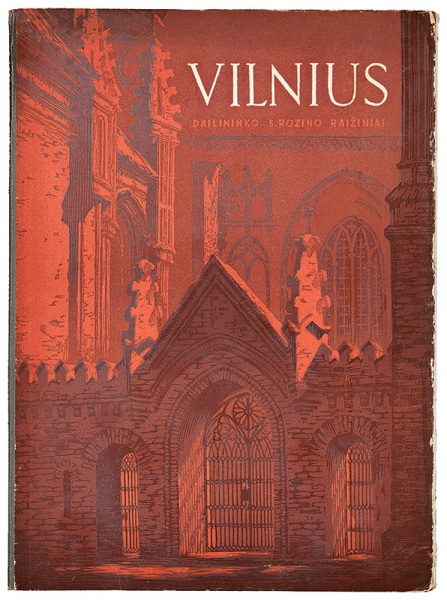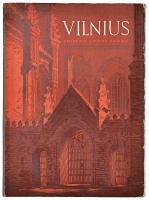

"Vilnius", 1957, cover
| Author: | Samuel Rozin (1926–2006) |
Samuel Rozin (b. 1926 Kaunas – d. 2006 USA) was the youngest of four brothers; their sister died in childhood. He liked to watch artists painting on Aleksotas Hill in Kaunas, and, encouraged by his schoolteacher Zale Beker, he made up his mind to become an artist. After the Nazis occupied Kaunas, the 15-year-old Rozin had to work in the document workshop of the Kaunas ghetto. Members of an anti-Nazi organisation in the ghetto sometimes contacted him asking him to forge documents. In 1944 he managed to escape from the ghetto. After serving in the Soviet army, he enrolled in the Faculty of Graphic Art at the Vilnius Art Institute in 1949, and between 1951 and 1955 he studied at the Ilya Repin Institute of Painting, Sculpture and Architecture in Leningrad. He left for Israel in 1973 and settled in Tel Aviv. He also taught art at a school in Safed. Rozin created mainly prints and book illustrations.
Source: Ellex Valiunas (LAWIN until 2015) art album: STORIES OF LITVAK ART (2023). Compiler and author Vilma Gradinskaitė.
Samuel Rozin (1926–2006) was Born and grew up in Kaunas during the interwar period. His father, Isaak Rozin, was a firemen’s platoon commander, who was awarded the Vytis Cross for courage. In 1941, at the beginning of the Second World War, Samuel Rozin and other Kaunas Jews were confined in the Slobodka ghetto, where his father died. His brothers died in the Ninth Fort in Kaunas, and his mother was deported to the concentration camp at Stutthof. Rozin worked at the ghetto printing press, where official documents were printed, along with forged documents for the resistance organisation in the ghetto. In 1944, the 18-year-old boy escaped from the ghetto and managed to join the partisans. He was wounded in an encounter with the Germans near Vievis, and was found and saved by a family of Lithuanian peasants. In 1949 he entered the LSSR Institute of Art in Vilnius, but soon moved to the Leningrad Institute of Painting, Sculpture and Architecture to study graphic art. On returning to Vilnius, he made engravings and book illustrations, and in 1955 he began to participate in exhibitions. In 1957, the Moscow Division of Graphic Arts of the SSSR Art Foundation and the Vaizdas printing press in Vilnius published a series of Rozin’s colour linocuts entitled Vilnius.
Source: Valiunas Ellex art album: VILNIUS. TOPOPHILIA II (2015). Compiler and author Laima Laučkaitė.








.jpg)
.jpg)
.jpg)
.jpg)
.jpg)
.jpg)
.jpg)
.jpg)
.jpg)
.jpg)